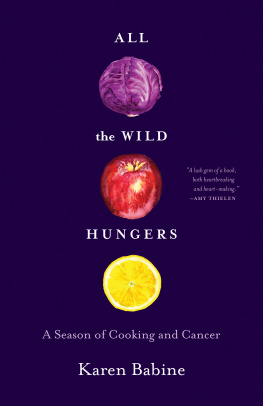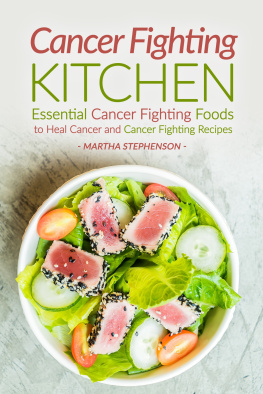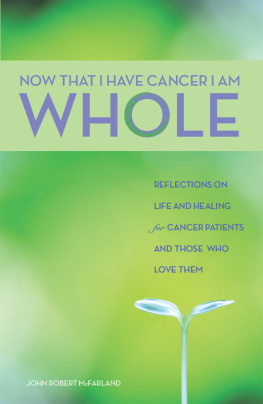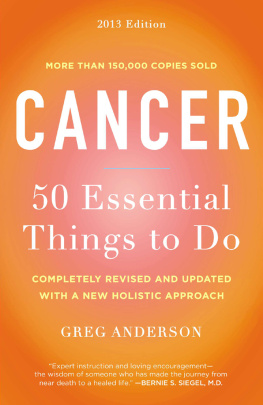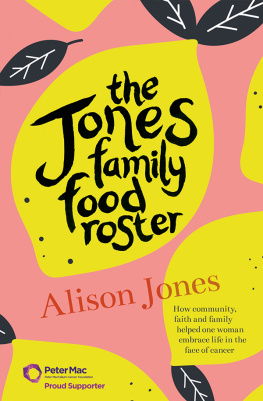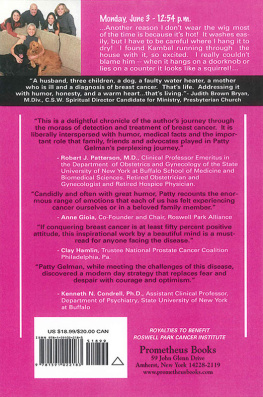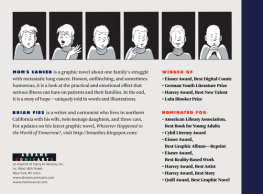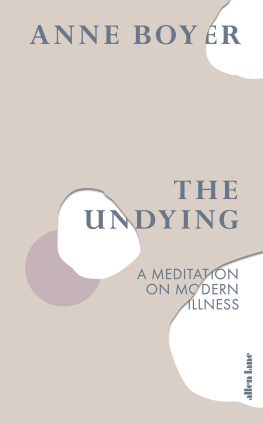
All the Wild Hungers
ALSO BY KAREN BABINE
Water and What We Know: Following the Roots of a Northern Life
All the Wild Hungers
A Season of Cooking and Cancer
KAREN BABINE
MILKWEED EDITIONS
2019, Text by Karen Babine
All rights reserved. Except for brief quotations in critical articles or reviews, no part of this book may be reproduced in any manner without prior written permission from the publisher: Milkweed Editions, 1011 Washington Avenue South, Suite 300, Minneapolis, Minnesota 55415.
(800) 520-6455
milkweed.org
Published 2019 by Milkweed Editions
Printed in Canada
Cover design by Mary Austin Speaker
Cover art: cabbage and apple by Nadezhda Shoshina;
lemon by Ekaterina Arkhangelskaia | Dreamstime.com
19 20 21 22 23 5 4 3 2 1
First Edition
Milkweed Editions, an independent nonprofit publisher, gratefully acknowledges sustaining support from the Jerome Foundation; the McKnight Foundation; the National Endowment for the Arts; the Target Foundation; and other generous contributions from foundations, corporations, and individuals. Also, this activity is made possible by the voters of Minnesota through a Minnesota State Arts Board Operating Support grant, thanks to a legislative appropriation from the arts and cultural heritage fund, and a grant from Wells Fargo. For a full listing of Milkweed Editions supporters, please visit milkweed.org.
Library of Congress Cataloging-in-Publication Data
Names: Babine, Karen, 1978- author.
Title: All the wild hungers : a season of cooking and cancer / Karen Babine.
Description: First edition. | Minneapolis, Minnesota : Milkweed Editions, [2019].
Identifiers: LCCN 2018023757 (print) | LCCN 2018035815 (ebook) | ISBN 9781571319838 (ebook) | ISBN 9781571313720 | ISBN 9781571313720 q(paperback : qalk. paper)
Subjects: LCSH: Babine, Karen, 1978- | Babine, Karen, 1978---Family. | Children of cancer patients--United States--Biography. | Authors, American--21st century--Biography. | Cooking--Anecdotes. | LCGFT: Autobiographies. | Essays.
Classification: LCC RC265.6.B42 (ebook) | LCC RC265.6.B42 A3 2019 (print) | DDC 618.92/994--dc23
LC record available at https://lccn.loc.gov/2018023757
Milkweed Editions is committed to ecological stewardship. We strive to align our book production practices with this principle, and to reduce the impact of our operations in the environment. We are a member of the Green Press Initiative, a nonprofit coalition of publishers, manufacturers, and authors working to protect the worlds endangered forests and conserve natural resources. All the Wild Hungers was printed on acid-free 100% postconsumer-waste paper by Friesens Corporation.
For my mother
Contents
All the Wild Hungers
IT STARTED THIS WAY: in early October, my mothers doctor asked her if she felt pregnant, if she had bladder issues, digestive problems, clothes not fitting right. My mothers immediate answer was nobut she went home and thought about where her weight was sitting, what she hadnt been able to exercise away, the constant constipation, the bloating she chalked up to eating badly while traveling, and she realized she did feel four months pregnant. I tried not to call the tumor her cancer baby, at least not out loud.
My middle sister is currently fourteen weeks pregnant with her third child and the family is ecstatic with joy. Six years ago, when my sister was pregnant with my niece, she sent a text that she and the dog were taking the Apple for a walk. We thought it was cute, as we are a small, tightly knit family that likes to think in Proper Nouns, to name things, to put even the most quotidian into its proper context. My sister is pregnant with a Lemon this week, Week 14, and this is amusing. My mothers uterine tumor, the size of a cabbage, is Week 30, and this is terrifying. Three years ago, my nephew was born at Week 36, but he was the size of that cancerous cabbage. There are patterns emerging here that I do not like.
We learn that my mothers is a childhood cancer called embryonal rhabdomyosarcoma and they tell us it appears only in children under the age of ten, not in sixty-five-year-old grandmothers, and I keep thinking of embryos, about the physical and emotional dangers of pregnancy, the risks of birth in a country that boasts the largest maternal death rate among developed nations, that women of color are at even more risk from dying as a result of pregnancy and childbirth, and that the risk transcends economic status. Serena Williamss blood clots were not immediately taken seriously after she gave birth, leading to nearly deadly results; activist Erica Garner suffered a heart attack and passed away three months after giving birth. I keep thinking about what is inside us that never goes away, love and fear, scars that are emotional and physical. The long length of my mothers abdominal scar is a bright, rich eggplant purple, necessary so the surgeon could deliver her uterus and tumor intact; her own mothers identical hysterectomy scar had long ago faded to white, an ectopic pregnancy in 1952 that nearly caused her to bleed to death. The lines that tie us together are written into our skin, into our cells, the potential destruction of a family present in its creation.
ONCE UPON A TIME, a girl who loved chocolate wanted to become a teacher. Her parents were both teachers, each the first in their rural farm families to attend and graduate from a four-year college. The girl loved music and believed chocolate was the answer to any question she had. The woman who loved chocolate made children the work of her life, spending the last fifteen years of her career teaching fourth grade. She would say, Theyre old enough to read and young enough to still listen. When Christmas would come around, the children remembered she loved chocolate more than anything, wrapping up Hersheys rather than another Worlds Greatest Teacher coffee mug. She would warn them that theres no fun in fourth grade and they would look up, startled, and say, But this is fun! and laugh at the twinkle in her bright blue eyes. I wonder what she would see now if she were still in her classroom, looking out at those ten-year-old faces. I wonder which stories this teacher would read to her students now, the lights dimmed after lunch. Would the woman who loved chocolate see old tales in their faces, the dark stories, the ones where the women are the danger, the absent and dead mothers, murderous stepmothers, evil disguised as grandmothers, the stories where witches lure children closer with houses made of candy and gingerbread, where stepmother-witches offer poisoned apples, where tiny bottles labeled Drink Me and cakes labeled Eat Me send us to places we never expected to go?
MY BELOVED ORANGE LE Creuset cast-iron skillet, size 23, was the first of my cast iron collection, and her origin story goes like this: I saw the bright enamel on a thrift store shelf more than a year before the cancer, before cast iron would become a thrill, before my mothers palliative doctor would remind her that pleasure is important. The skillet was buried under other cookware, and when I flipped it over, I ran my finger over the gunk on the bottom of the pan, as if I could read the letters there by touch. Who brings Le Creuset to a thrift store? I took it home for $7.99, scrubbed it with coarse salt and oil, then set to season it with the help of Google because I had no idea what to do with cast iron. That night, I made a frittata that was mostly edible. The skillets name became Agnes, named for romance novelist Jennifer Crusies heroine in
Next page
